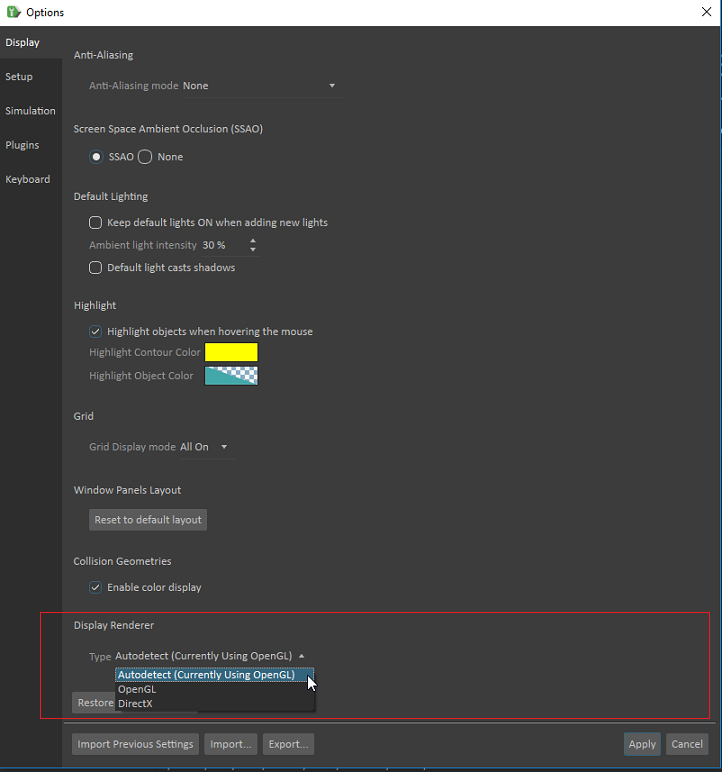DirectX Support in Vortex Editor - Tech Preview
Please note that Direct X12 support is in development and has not reached feature parity with the OpenGL real time render system.
There are also significant visual differences from the standard OpenGL 3D view.
Content created with Vortex Editor in DirectX is compatible with any rendering version and can be reopened with OpenGL technology.
How to enable DirectX support in Vortex Editor
A new DirectX renderer has been integrated in the Vortex Editor, which will allow use of the editor on most PCs and laptops.
The renderer (new DirectX, or previous OpenGL) is automatically selected depending on the type of graphics card that is detected in the system.
It can also be manually chosen via a new entry in the options page of the editor as shown below.
What is supported in the Vortex Editor DirectX
Features Supported by DirectX mode
- Mechanical engineering content creation features:
- Collision Geometries
- Constraints
- Inertia Bodies
- Center of Mass adjustment
- Cables
- Object manipulation (Position, Rotation, Scale)
- Connection Graph
- VHL interfaces to mechanical systems
- Scripting
- Collision Rules
- Configurations
- Sensors
- Joystick Input
- Friction Materials
- Multi-tab workflows (note performance issues when switching tabs)
- Single layer non PBR materials
- Uncompressed texture maps
- Simple cable spline display
- Skybox light with user defined texture cube map, (no sky display)
- Single layer PBR materials (no light probe support)
- Ambient, Point, and Spot Lights
- LOD settings per node
- Perspective Camera
- Animation Path
- QT Console
Features Not Supported by DirectX mode
- Earth rendering
- Ocean rendering
- Meshed Cable rendering
- Shadows
- Camera extensions except for Perspective
- Camera accessories
- Light accessories
- VR
- Decals
- 2D Particle rendering
- Effects
- HUD
- Vehicle Traces
- Weather effects
- Compressed texture maps
- Multi layered materials
- Material blend modes
- Material preview
- Runtime material modifications
- UV modifications (Imported 3d models must have the correct UV mapping already assigned)
- Skydome light with sky display
- Multiple viewports
- Ground grid display
- Vegetation
- Humans
- Light Halo
- Depth Sensor
- Viewport overlays
- Mouse Spring
- Object Trace
Visual Differences between DirectX and OpenGL Rendering
Note that Mechanisms and Scenes without any lighting extensions in their document hierarchy will not have their Collision Geometries lit. However Collision Geometries will be lit in the Assembly Editor
| OpenGL View | DirectX View |
|---|---|

